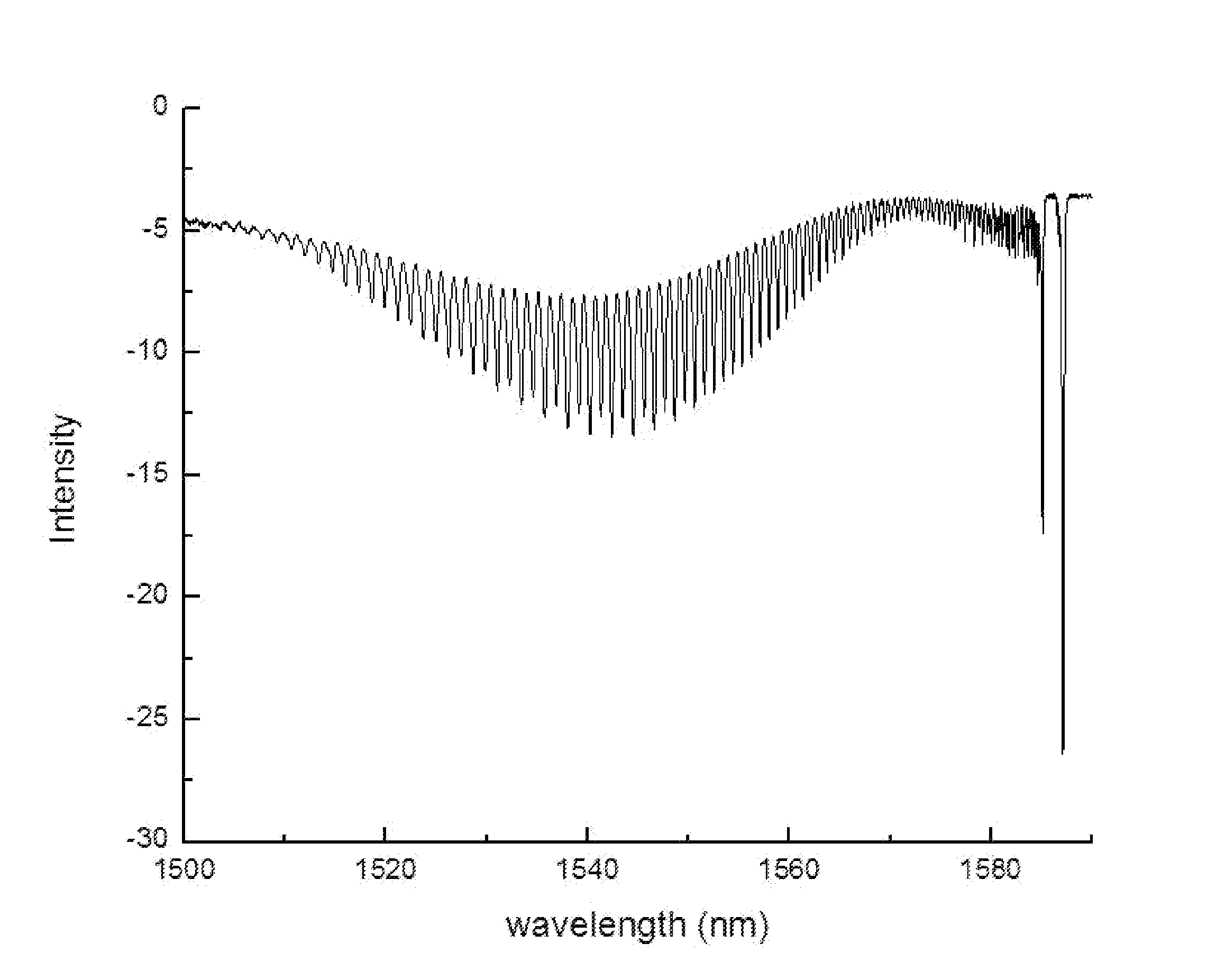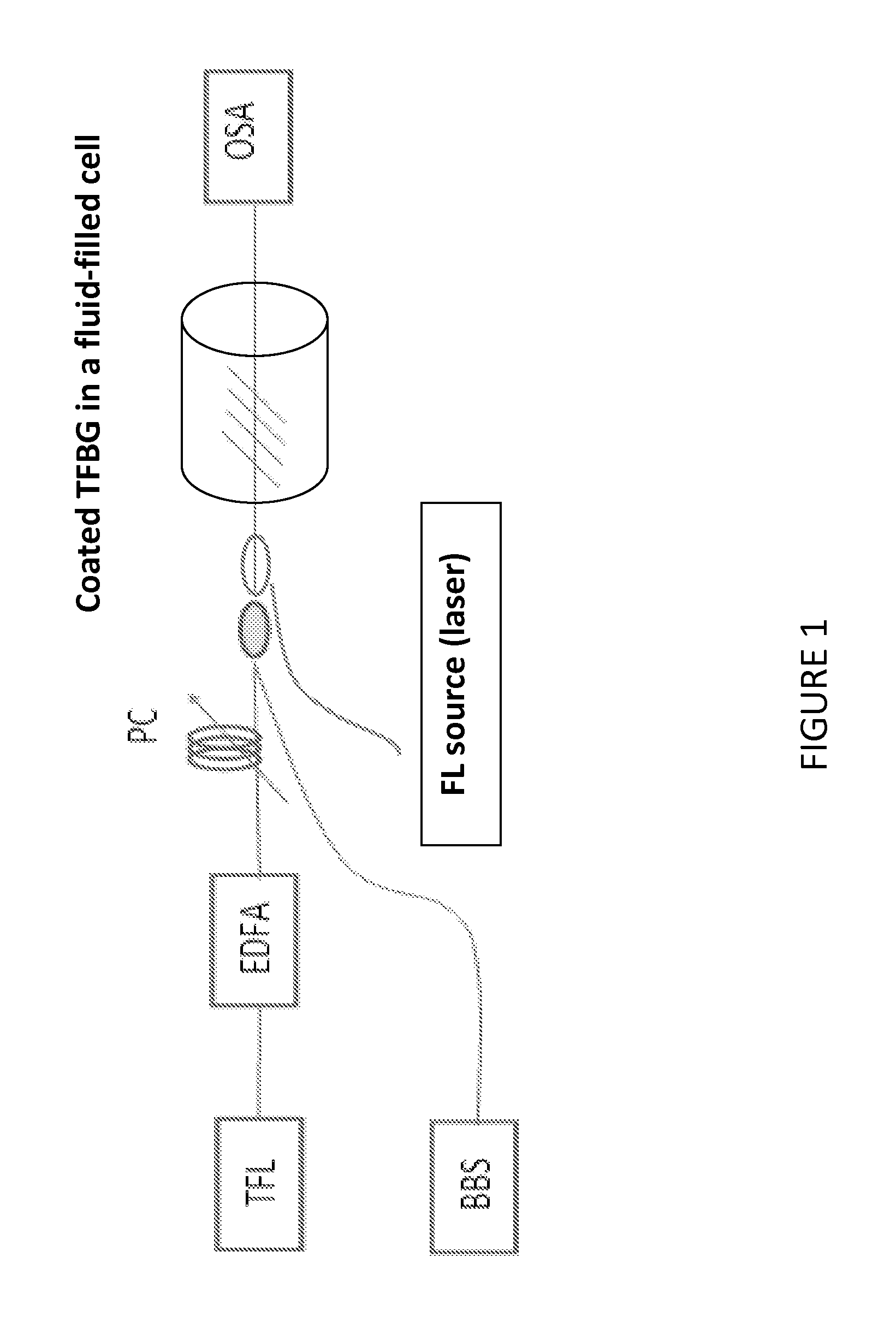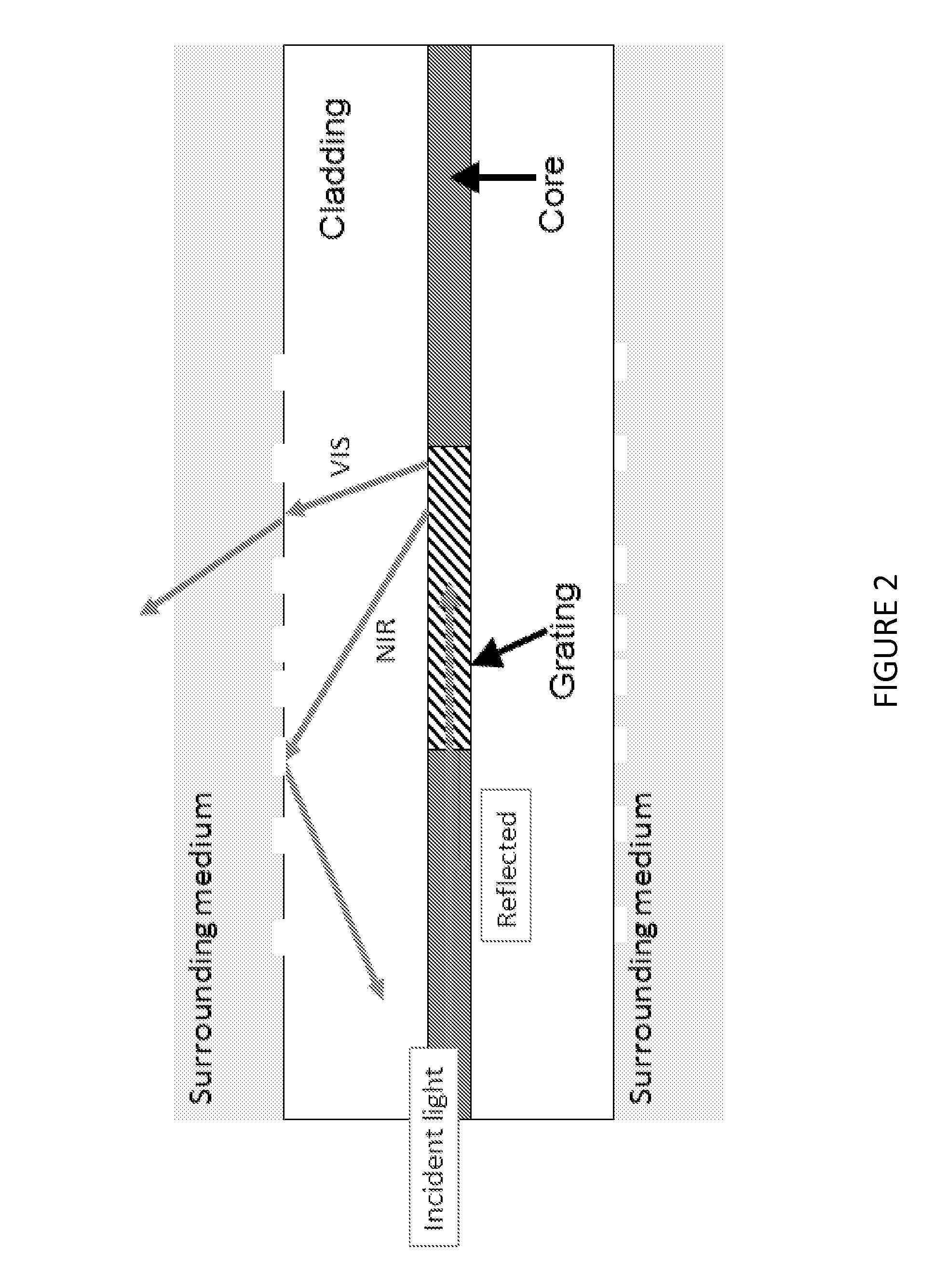Optical fiber with grating and particulate coating
- Summary
- Abstract
- Description
- Claims
- Application Information
AI Technical Summary
Benefits of technology
Problems solved by technology
Method used
Image
Examples
example 1
Grating Fabrication
[0066]For the examples described herein, the TFBG was produced using a standard telecommunications single-mode fiber (CORNING SMF 28). One-meter-long fiber strands were placed in a pressurized container that was filled with pure Hydrogen gas at a typical pressure of 2500 psi for a period of at least 14 days. The fiber strands were then taken out of the container and prepared for UV irradiation: a 5-cm-long section of the fiber polymer jacket was removed with a stripping tool to expose the glass cladding. The fiber was connected to a broadband light source (covering the 1510 nm to 1620 nm wavelength range) and to an optical spectrum analyzer. The exposed part of the fiber was positioned on the downstream side of a diffractive grating and exposed to intense pulses of ultraviolet light at 193 nm generated by an excimer laser (any wavelength between 190 nm and 248 nm may be used). The power density of the pulses were 40 mJ / cm2 at the fiber, and the pulse repetition ra...
example 2
Coating Fabrication
[0067]This example describes one kind of particulate coating that will serve as an exemplary embodiment. Silver nanowires were chemically synthesized as described in Sanders et al. (Sanders A W et al. (2006) Nano Lett, 6(8): 1822-1826; the entirety of which is hereby incorporated by reference). The procedure results in highly crystalline nanowires with smooth surfaces.
[0068]In brief, all reagents were obtained from Sigma-Aldrich. All glassware was cleaned using aqua regia, rinsed in 18.2 MΩXcm deionized water, and placed in an oven to dry prior to experimentation. A 50-mL round bottom flask containing 24.0 mL of anhydrous 99.8% ethylene glycol (EG) and a clean stir bar were placed in an oil bath set to 150° C. and allowed to sit for 1 hour. Using a micropipette, 400 μL of 3 mM sodium sulfide dissolved in EG was added to the flask. Ten minutes later, 6 mL of EG containing 0.12 g of dissolved polyvinylpyrolidone (PVP) with a molecular weight of 55000 AMU was injecte...
example 3
Heating of the Particulate Coating on the TFBG Fiber
[0071]A TFBG fiber with particulate coating was manufactured according to Examples 1 and 2. A near-infrared tunable laser (TL) was tuned to the maximum absorption of the TFBG. FIG. 3 shows that maximum absorption occurs at a wavelength of approximately 1540 nm. The fiber amplifier (EDFA) was set to increase the power to any desired level between 1 mW and 1 W. For the example, the TFBG fiber with particulate coating was placed in a glass capillary tube with an inner diameter of 1 mm. The capillary was filled with water. A conventional electrical thermocouple was inserted in the capillary to measure the temperature of the liquid adjacent to the grating. The near-infrared tunable laser was set to 1540 nm and the EDFA varied the output power from 0 mW to 500 mW. As demonstrated in FIG. 4, temperatures of the order of 90° C. may be achieved with less than 1 W of optical power in the fiber. (FIG. 1, shows an illustrative example diagrami...
PUM
| Property | Measurement | Unit |
|---|---|---|
| Length | aaaaa | aaaaa |
| Fraction | aaaaa | aaaaa |
| Fraction | aaaaa | aaaaa |
Abstract
Description
Claims
Application Information
 Login to View More
Login to View More - R&D
- Intellectual Property
- Life Sciences
- Materials
- Tech Scout
- Unparalleled Data Quality
- Higher Quality Content
- 60% Fewer Hallucinations
Browse by: Latest US Patents, China's latest patents, Technical Efficacy Thesaurus, Application Domain, Technology Topic, Popular Technical Reports.
© 2025 PatSnap. All rights reserved.Legal|Privacy policy|Modern Slavery Act Transparency Statement|Sitemap|About US| Contact US: help@patsnap.com



